Usually when we talk about plants and families together we're talking about plant families, such as the pea family (Fabaceae) or the lily family (Liliaceae). Indeed this is the time of the year when the hamamelis family (Hamamelidaceae) is adding its subtle charm to our garden.
This week's Plant Files is focussing on witch hazels, Hamamelis x intermedia, named for members of a family very much at the heart of growing and hybridising these remarkable winter shrubs. Robert and Georges de Belder bought the site at Kalmthout in Belgium back in 1952 with the intention of establishing a private arboretum. Over time the brothers built up their collection, adding to the existing woody plants left when they bought what had earlier been a nursery.
Jelena Kovačič, a Slovenian botanist and taxonomist, heard that there were some fine specimens of Stewartia pseudocamellia at what had been the old Kort Nurseries at Kalmthought. Jelena cycled all the way from Germany (where she had been studying) to Belgium to see them. On arrival she found that the site was now owned by the de Belder brothers; after a whirlwind romance Jelena and Robert married just three months later.
Jelena and Robert are both commemorated by fine hamamelis cultivars, as is their daughter Diane. Not all of these were actually bred directly by the de Belders, but some were instead were selected from seedlings left by the nursery. However it cannot be overstated how well these selections were made, nor how instrumental Robert and Jelena were in the cultivation and promotion of the genus.
Unusually Hamamelis x intermedia 'Georges' is named after two people, Robert de Belder's brother Georges and his grandson of the same name.
Hamamelis 'Robert' is to my mind a breathtaking plant. Large flowers of a bright peachy-orange stand out exceptionally well, even on an overcast day. Much as I love to see Hamamelis 'Jelena', an early variety that often heralds the arrival of winter in the UK, the small burnt-orange flowers of 'Jelena' could never hold a candle to the sheer extravagance of Hamamelis 'Robert'.
Hamamelis 'Diane' is much more subtle. While the orange, and many yellow, flowered varieties are quite conspicuous, the reds tend to be rather difficult to spot thanks to their dark colouring and smaller flowers. The trick is to site this one near a path and in a sunny position, ensuring that the flowers are as visible as possible to start with.
I haven't really noticed much in the way of perfume from these. I know there's nothing on 'Diane' and I've never had anything from 'Jelena', but I couldn't say about 'Georges' and 'Robert'. I suspect 'Robert' might well have a perfume, but with hamamelis much depends on the warmth of the day.
Hamamelis are fairly long-lived plants, subject to their needs being met. They're perfectly cold hardy for us in the UK but dislike extremes of wet and dry. Summer drought and winter wet can be fatal. In the more maritime regions of the UK you can probably get away with growing them in a sensibly open location, but in more continental areas (like the South East) I would suggest light shade. Honey fungus can be a problem, particularly when plants are subjected to stress.
Hamamelis can grow to quite a size in time but you can prune them, if you wish to, by shortening new growth by around half in late winter. This will make the plant more compact in habit and, in principle, more floriferous. However if you wish to do this I would suggest buying a young plant and pruning it from a small size; once a plant has got larger it's probably best left to it. Pruning of hamamelis is not a necessity.

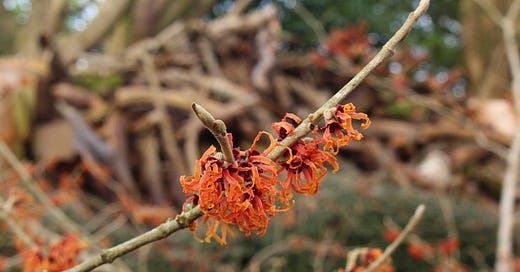



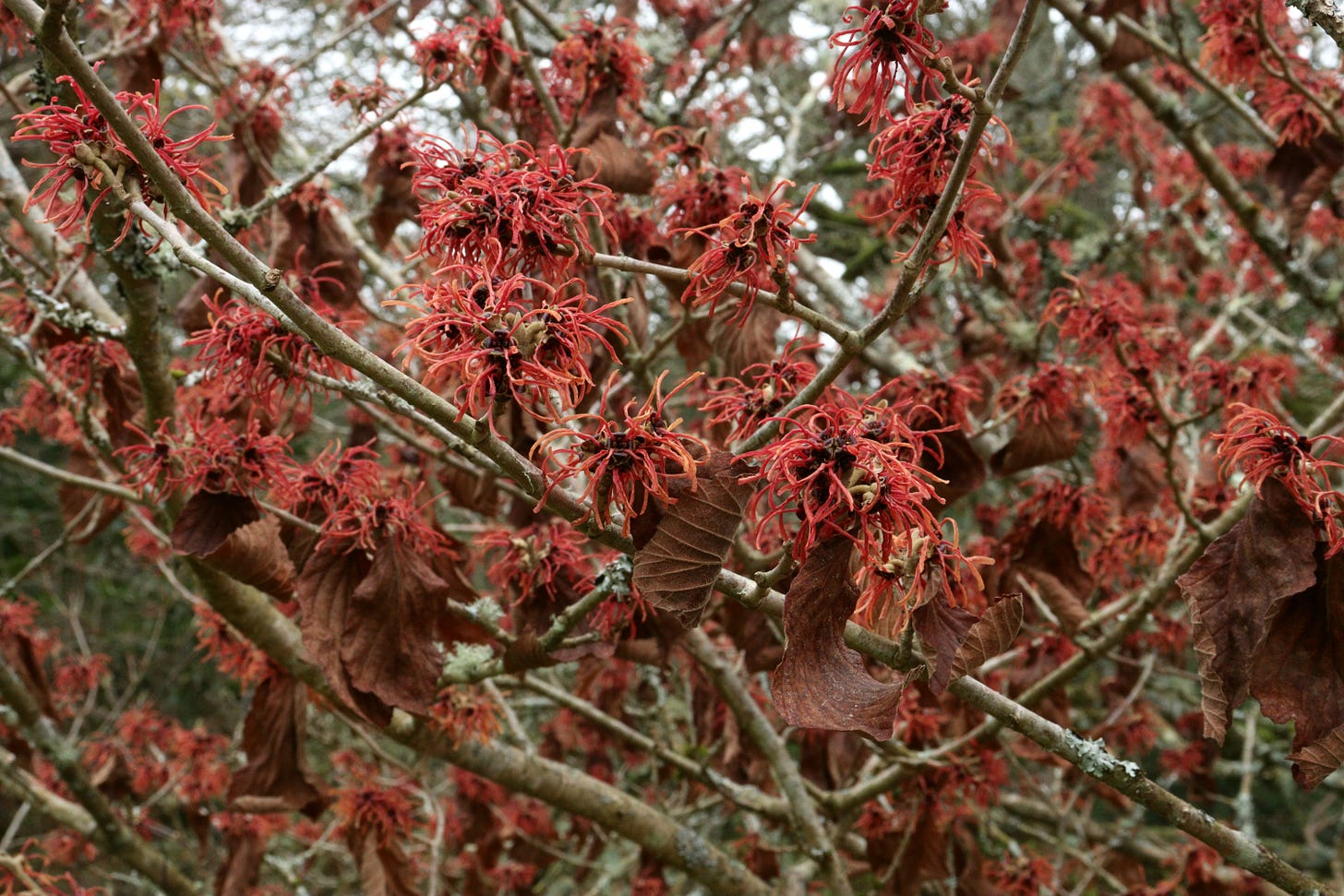
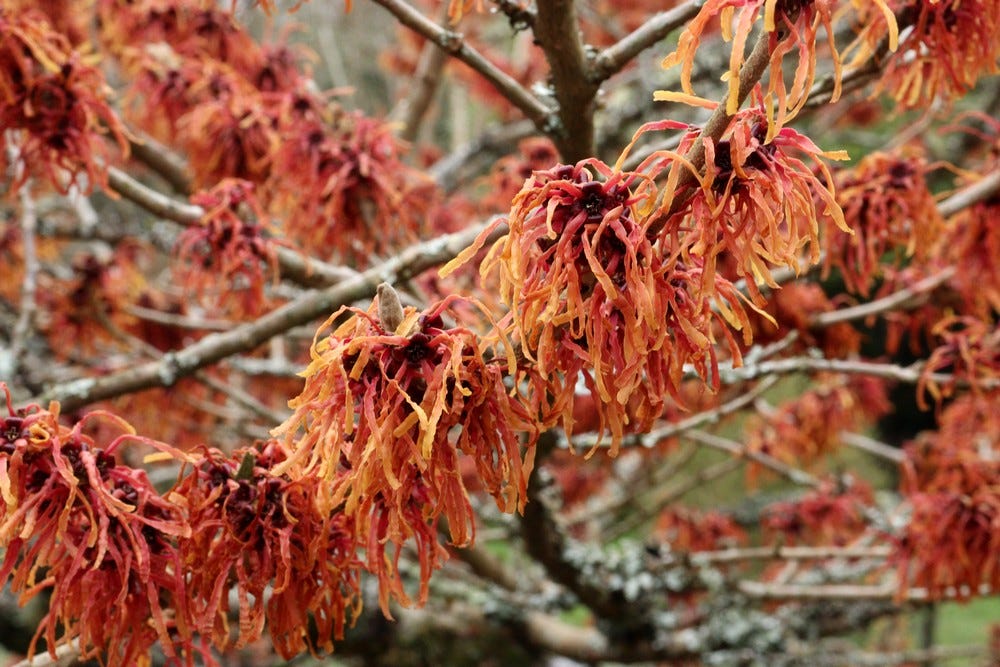
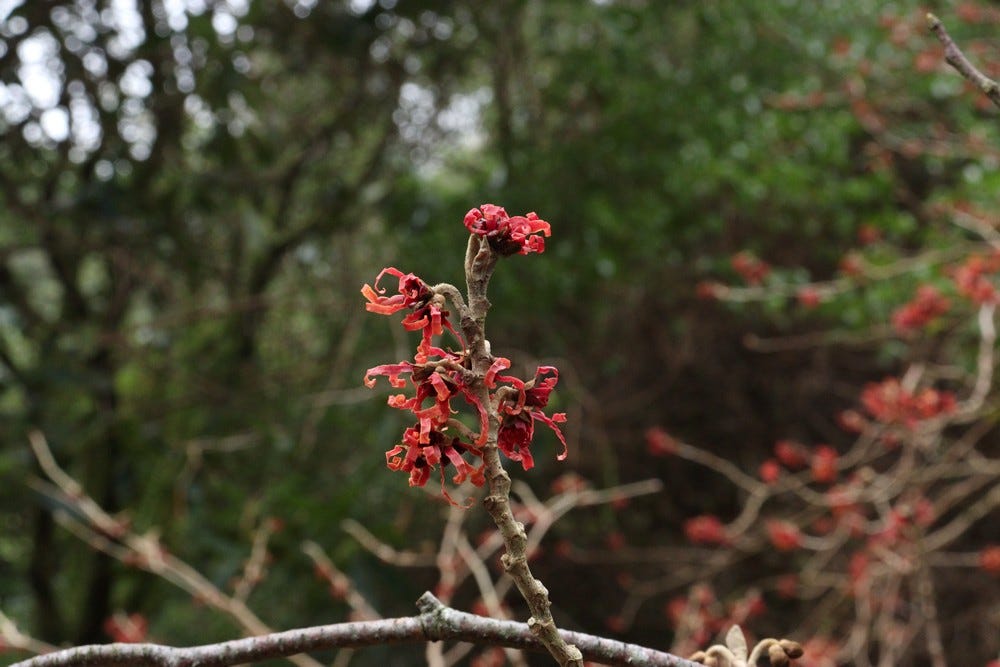
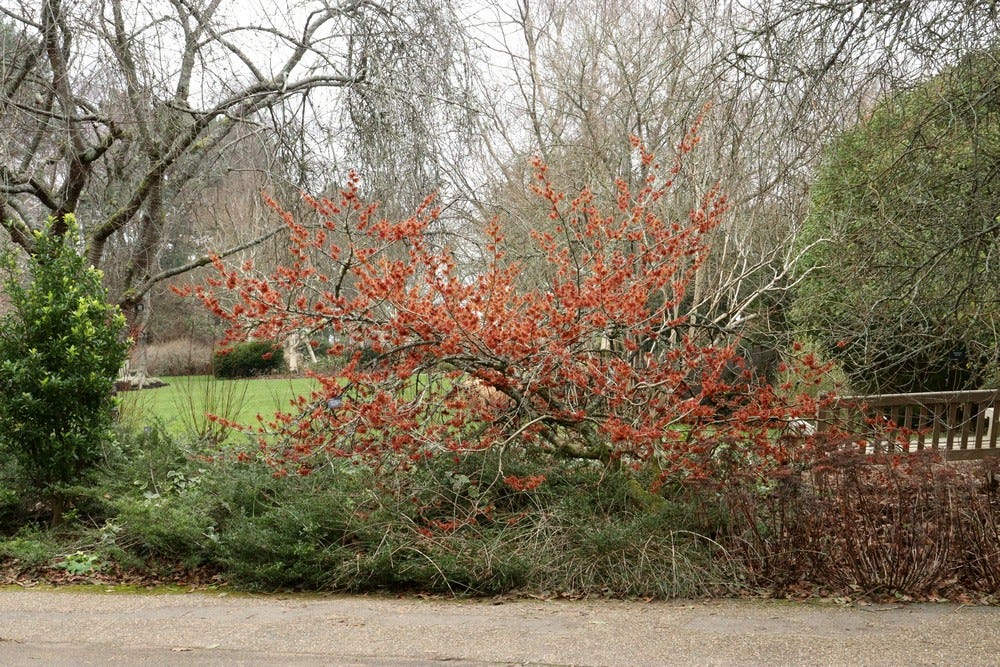
I enjoyed the family backstory on Kalmthout witch hazels.
Hi Ben, I'm really coveting Hamamelis in my plant selection for my blank canvas garden in a very exposed windy part of North Cornwall right by the coast path. I've been wondering if there's a particular cultivar that would stand up to these conditions, do you know? I keep meaning to research a specialist nursery to explore further.....